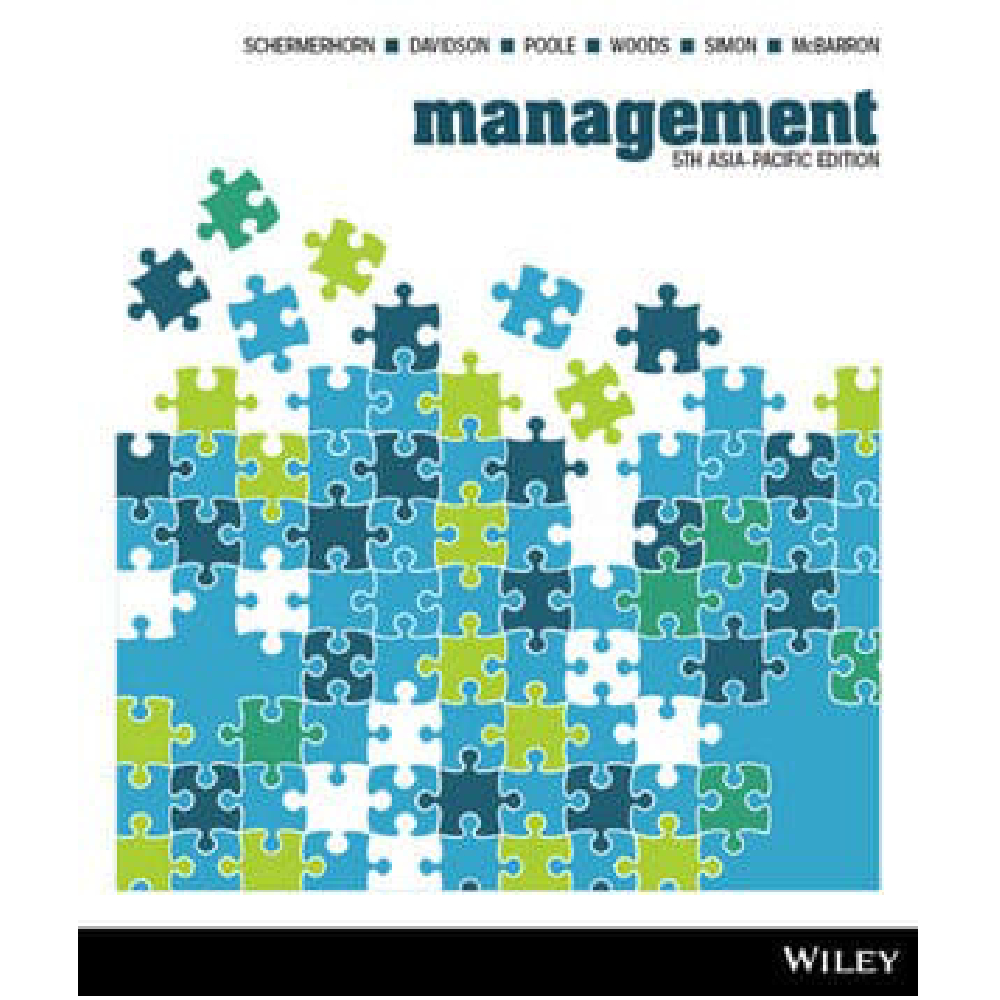Management 5th Asia Pacific Edition by Schermerhorn – Test Bank
$55.00
Management 5th Asia Pacific Edition by Schermerhorn – Test Bank
You will receive this product within 24 hours after placing the order
MANAGEMENT 5TH ASIA PACIFIC EDITION BY SCHERMERHORN – TEST BANK
Multiple choice questions
1. The word ‘control’ must be used carefully because:
a. controlling is an unethical managerial practice that must be concealed.
b. most employees resent managerial control.
*c. the word has a negative connotation.
d. few managers actually know what it means.
e. control is malicious
General Feedback:
Page 295. Factual. Learning objective 1. The word ‘control’ often has negative connotations.
2. Measuring performance and taking action to ensure desired results is the essence of the management function of:
a. productivity improvement.
*b. controlling.
c. leading.
d. organising.
e. planning.
General Feedback:
Page 296. Factual. Learning objective 1. Broadly speaking, controlling is the process of measuring performance and taking action to ensure the planned outcomes are achieved.
3. The purpose of controlling is to:
a. motivate employees to work overtime hours.
*b. make sure plans are fulfilled and that actual performance meets objectives.
c. define a plan of action for the organisation.
d. coordinate resources and task performance.
e. develop a hierarchy of objectives for lower level managers.
General Feedback:
Page 296. Factual. Learning objective 1. Control is aimed at ensuring that plans are fulfilled and that performance targets are met.
4. Which of the following is the definition of controlling found in the textbook?
a. Controlling refers to actions taken to reverse negative behavioural trends of employees.
b. Controlling is the monitoring of the fiscal results of managerial policies.
c. Controlling is the management process that separates the clever manager from the dim-witted manager.
*d. Controlling is a process of measuring performance and taking action to ensure desired results.
e. Controlling is the set of actions that a manager takes to prevent inventory shrinkage.
General Feedback:
Page 296. Factual. Learning objective 1. Controlling is the process of measuring performance and taking action to ensure desired results.
5. The Controlling does all of the following EXCEPT:
a. make sure that overall direction is consistent with plans.
b. ensure that objectives and accomplishments of various subgroups of the organisation are consistent with each other.
*c. secure adequate financing for the enterprise.
d. make sure employees comply with organisational policies.
e. make sure organisation members act with propriety and respect for each other.
General Feedback:
Page 296. Applied. Learning objective 1. Planning allocates resources.
6. The role of the controlling function in the management process is:
a. to create structures.
*b. to ensure results.
c. to set direction.
d. to inspire effort.
e. all of the options listed.
General Feedback:
Page 296. Factual Learning objective 1. Controlling sees to it that the right things happen, in the right way, and at the right time.
7. The four steps of the control process are: establish objectives and standards; __________; compare results with objectives and standards, and __________.
*a. Measure actual performance; take corrective action as needed.
b. Develop alternative systems; take corrective action as needed.
c. Revise unmet objectives; pay for the losses.
d. Set new objectives; evaluate results.
e. Measure actual performance; continue as before.
General Feedback:
Page 297. Factual. Learning objective 1. The four steps are: 1. establish objectives and standards; 2. measure actual performance; 3. compare results with objectives and standards; and 4. take corrective action as needed.
8. A(n) __________ is self-contained in its performance-monitoring and correction capabilities.
a. open control system
b. employee evaluation system
*c. cybernetic control system
d. financial control
e. total quality system
General Feedback:
Page 297. Factual. Learning objective 1. A cybernetic control system is self-contained in its performance-monitoring and correction capabilities.
9. The four steps of the control process are: establish performance objectives and standards; measure actual performance; compare actual performance with objectives and standards; and
*a. take corrective action as needed.
b. reap the profits.
c. pay for the losses.
d. redefine the objectives.
e. continue as before.
General Feedback:
Page 297. Factual. Learning objective 1. The four steps are: 1. establish objectives and standards; 2. measure actual performance; 3. compare results with objectives and standards; and 4. take corrective action as needed.
10. Effective planning by managers helps accomplish which step in the control process?
a. Measuring actual performance
b. Comparing actual performance with objectives and standards
*c. Establishing performance objectives and standards
d. Taking necessary corrective action
e. Evaluating the results of corrective action
General Feedback:
Page 297. Factual. Learning objective 1. The control process starts with planning, when performance objectives and standards for measuring them are set. It can’t begin without them.











Reviews
There are no reviews yet.